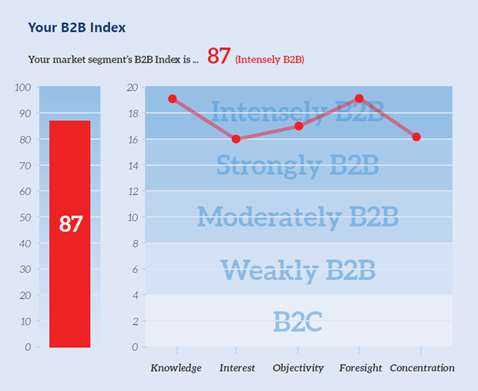- BLUE HELP
- Market Segmentation (Step 1)
- “How B2B” is your market segment?
-
Blueprinting Center & Methodology
- What is New Product Blueprinting?
- How is Blueprinting learned and applied?
- Blueprinting Center
- Blueprinting E-Learning Course
- How can I become Certified in New Product Blueprinting?
- How does Blueprinting fit with a stage-and-gate process?
- How does Blueprinting fit with strategic planning?
- How does Blueprinting fit with Design Thinking?
- How does Blueprinting fit with Lean Startup?
- How does Blueprinting fit with Minesweeper de-risking?
- How does Blueprinting fit with LaunchStar product launch?
- What innovation metrics should we use?
- What is "Jobs-to-be-Done?"
-
Blueprinter® Software
-
Market Segmentation (Step 1)
-
Discovery Interviews (Step 2)
- How to plan Discovery interviews
- Preparing your interview team
- Convincing customers to be interviewed
- How to handle confidential info in an interview
- How to conduct a Discovery interview
- Finding & using a digital projector for interviews
- How to conduct a customer tour
- How to debrief & follow-up a Discovery interview
- Engaging your sales colleagues in interviews
- Engaging distributors in interviews
- Interviewing customers down the value chain
- How to interview remotely with web-conferences
- How to interview at trade shows & other venues
- Interviewing in different global cultures & languages
- How to listen well during customer interviews
- How to probe during customer interviews
- How to gather economic data during interviews
- How to create & use Current State questions
- How to identify Must Haves (MH)
- How to select Top Picks (TP)
- How to use Trigger Maps
- How to form Outcome Statements
-
Preference Interviews (Step 3)
-
Rest of Blueprinting (Steps 4-7)
-
Everyday VOC
-
Minesweeper® De-risking
2. The B2B Index: “How B2B” is your market?
AIM's "B2B Index" helps you understand the B2B nature of your market... and how to use this information.
It can be an over-simplification to think in blunt terms of B2B vs. B2C… and even misleading. If someone from your office buys a new paper stapler, it’s technically a B2B purchase… but their level of knowledge, interest, objectivity, etc. might be quite low. If you’ve been planning on buying a sports car—a B2C purchase—you might be very knowledgeable and interested, for instance.
That’s why The AIM Institute developed the B2B Index, which tells you “how B2B” your market is. This is a free service anyone in your company can use at www.b2bmarketview.com. There you’ll answer 17 questions, to reveal how much knowledge, interest, objectivity, etc. the key decision-makers and decision-influencers have in your target market segment.

This tool then delivers a chart showing your B2B Index sub-scores for the five characteristics, as well as an overall B2B Index. The closer you are to 100 the “more B2B” your market is, and closer to zero, the “more B2C” it is.
The higher your markets' score, the greater your engagement potential. This means you will be able to learn more from them. It also means you can get them more excited about the product development work you're doing... so when you are ready to launch your product, they'll be very interested in it.
If you are responsible for several market segments, each will likely have a different profile. Also, this tool can be used for ongoing marketing work such as product launches, not just customer insight in the front end of innovation.
For more on the B2B Index, check out the 2-minute video, Put your B2B advantages to work, part of the B2B Organic Growth video series by Dan Adams.
Keywords: B2B index, B2B marketview, B2B, business to business, B2C, business to consumer, engagement potential
